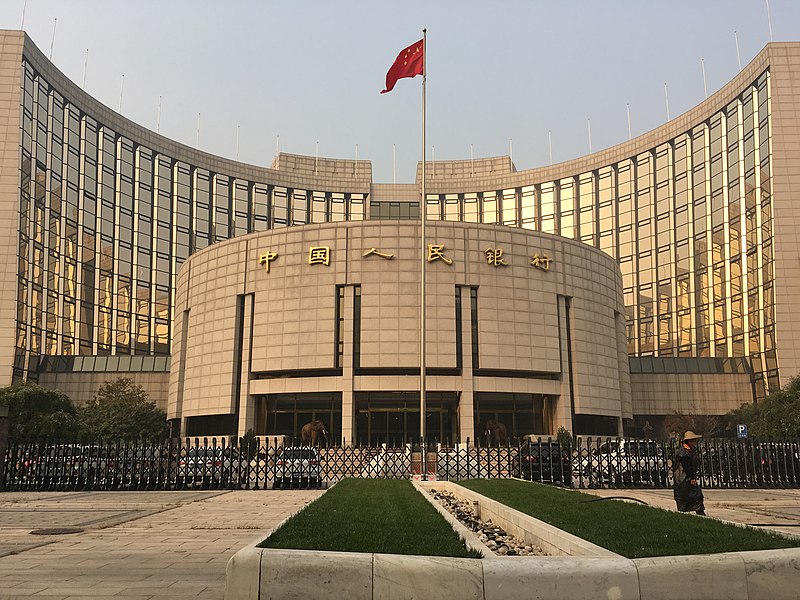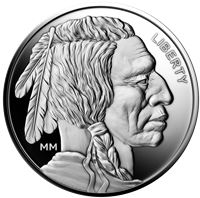Palladium Spot Price
Tuesday, April 23, 2024 at 6:31 AM EST Refresh page to update.
Our Precious Metals Insider Latest News

China Has Taken Over Gold Price Control from the West
The People’s Bank of China (PBoC) bought 735 tonnes of gold in 20...
Daily Deals
Buyers Guides

Beginner's Guide to Investing in Precious Metals
Allocating some of your investment dollars to precious metals is a wise decision. But doing your due diligence before you make a purchase is even wiser.
Palladium Spot Price FAQ
What is the spot price of palladium?
The palladium spot price is the free-floating price for one troy oz of pure palladium, and is the lowest possible cost for physical palladium sold for immediate delivery.
The spot price refers to the going rate for palladium at any given moment, and is thus used by traders, sellers, and palladium producers in order to appropriately price their palladium products.
Why is palladium so expensive?
Palladium is rather expensive because there is a very limited supply. This is due mainly to the high cost of extracting palladium from the earth.
Moreover, palladium is a precious metal. It has special properties that make it particularly useful in industrial settings, such as autocatalysts in modern automobiles.
Is palladium worth more than gold?
At the time of writing, yes. Palladium is currently more expensive than gold per troy ounce. This trend developed in 2019.
How is the spot price of palladium calculated?
Spot prices are derived mainly by supply and demand for palladium within the free market.
These market forces dictate prices, as the spot price should reflect the equilibrium between how much the precious metal is being demanded (by consumers, jewelers, investors, and automobile producers) and what the available supply is. Among other factors, the trading of palladium futures on the futures market has a significant influence on the current spot price.
How often do palladium spot prices change?
Spot prices for palladium are constantly changing.
Throughout the trading session, the price moves up and down based on how much palladium is bought and sold. Because exchanges in Asia and abroad are open when Western markets are closed, the spot price is effectively changing 24 hours a day.
What can cause the spot price of palladium to change?
The greatest determining factors for the palladium spot price are supply and demand. All of the smaller factors affecting the spot price can be grouped under changes in supply or changes in demand.
For example, increases in supply such as the opening of new palladium mines or an increase in production from existing mines will generally put downward pressure on the spot price. Changes in demand, such as growing collector interest in palladium coins, will generally influence prices higher.
Perhaps the greatest source of demand for palladium is from the automobile industry, where the metal is used in catalytic converters for cars (especially diesel engines), meaning a rise or fall in automobile manufacturing can also have an effect on the palladium spot price.
What currency is the spot price of palladium denominated in?
Palladium spot prices are denominated in U.S. dollars.
Although you can find out the price in different currencies by using exchange rates, pricing palladium in dollars makes sense because the U.S. dollar is used all over the world. This also cuts out the transaction costs of converting purchases into different currencies, including when you buy palladium online from another country.
What amount of palladium does the spot price refer to?
The spot price of palladium always refers to the cost of one troy ounce of the metal.
The troy system of weights has its origins in antiquity, but is still used for measuring precious metals to this day. One troy ounce is equivalent to 31.1 grams, which is slightly heavier than the more common AVP ounce (28 grams).
Is the spot price of palladium universal?
Yes, the spot price of palladium is the same wherever you go around the globe.
The spot price takes into account factors from all over the world economy, not just the United States, so it is used as a real-time benchmark across all international markets.
Why can’t I buy palladium at the spot price?
The spot price is the lowest possible cost for a troy ounce of palladium. It is the price which mining companies sell their freshly mined palladium for. It is the “out-of-the-ground” cost, so to speak.
Therefore, all of the costs associated with fabricating or minting the palladium into a finished product must be accounted for on top of the spot price. Precious metals dealers must charge at least a small premium above the spot price, or they would not be profitable and would have to shut down operations.
Does the spot price include markups or shipping costs?
No, shipping costs and markups are not incorporated into the spot price. In fact, the spot price doesn’t include the cost of refining, processing, and fabricating palladium into pure bullion, either.
Why are some palladium products priced so much higher than others?
The variance in prices among different palladium products is attributable to the form the metal comes in (bar, round, coin, etc.) as well as its potential collectible appeal.
While more generic palladium bars will be priced very close to the spot price (i.e. their melt value), a palladium coin with legal tender status, or a limited-edition palladium bar with artistic craftsmanship, will garner higher premiums due to the specialized labor involved in their production.
How are the premiums over spot calculated? Are they the same for all palladium products?
Premiums will vary from item to item. The premium over spot for a palladium product is based on -- but not limited to -- some of the following factors: the cost of fashioning the palladium into a coin or bar; the cost of special labor for intricate, artistic representations; the shipping expenses from producer-to-distributor, from miner-to-refiner, etc.; and the potential collectible or numismatic value of a scarce item.
While some of the more basic palladium products will be just a few dollars over spot, rarer palladium collectibles (usually coins) can acquire significant premiums over spot.
What are bid and ask prices?
The bid price is the amount a dealer will pay for a given product or unit of precious metal. The ask price is how much the dealer will sell a product for.
The spread between these two prices -- the “dealer spread” or “bid-ask spread” -- is often used as a measure of that item’s liquidity on the market.
What are palladium futures contracts?
Palladium futures contracts are agreement between two parties to exchange a specified quantity of investment-grade palladium (.995 fine and above) at a specified price on a future date (typically 3 months in the future).
Because palladium futures represent an expected price for the metal at a later date, a high volume of trades in futures contracts priced above or below the current spot price can influence real-time prices higher or lower.
Do mining companies have any effect on the price of palladium?
Yes, mining companies can indirectly affect the palladium price.
If the spot price of palladium falls too far, certain mining operations must shut down or risk losing considerable sums of money, since research and development costs are rather steep. The miner can cut production when prices are low, thus decreasing supply (or expected supply) and influencing prices higher, or create the opposite effect by ramping up production when prices are high.
Is palladium traded 24 hours a day?
Yes, because there are exchange platforms located all over the world (London, Hong Kong, Singapore, etc.), palladium and the other precious metals are traded on a constant basis, meaning price changes are always occurring.

